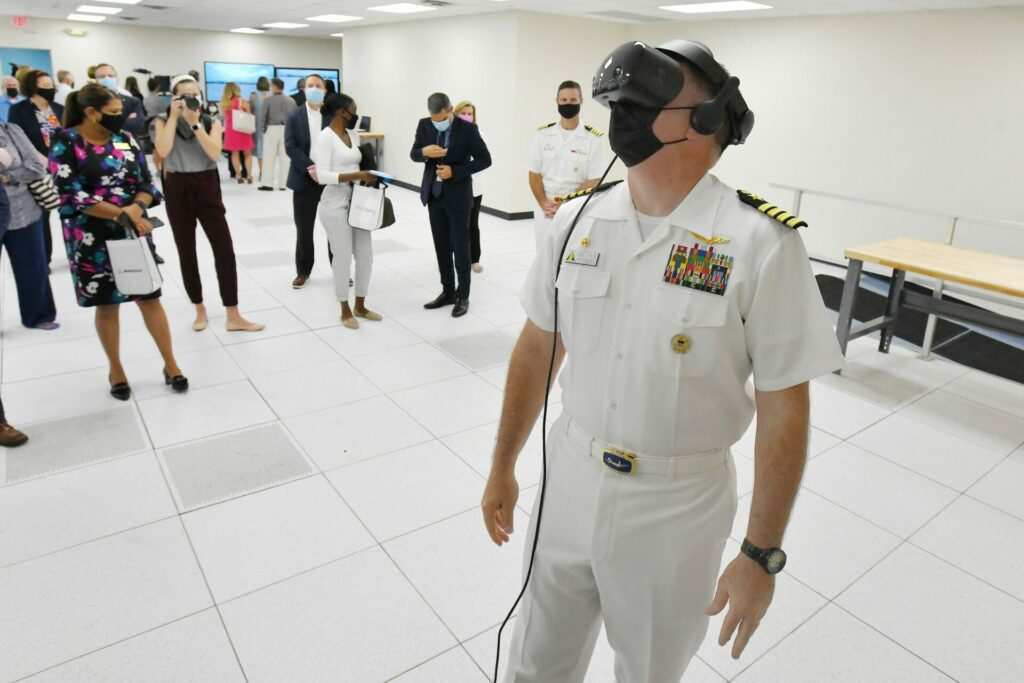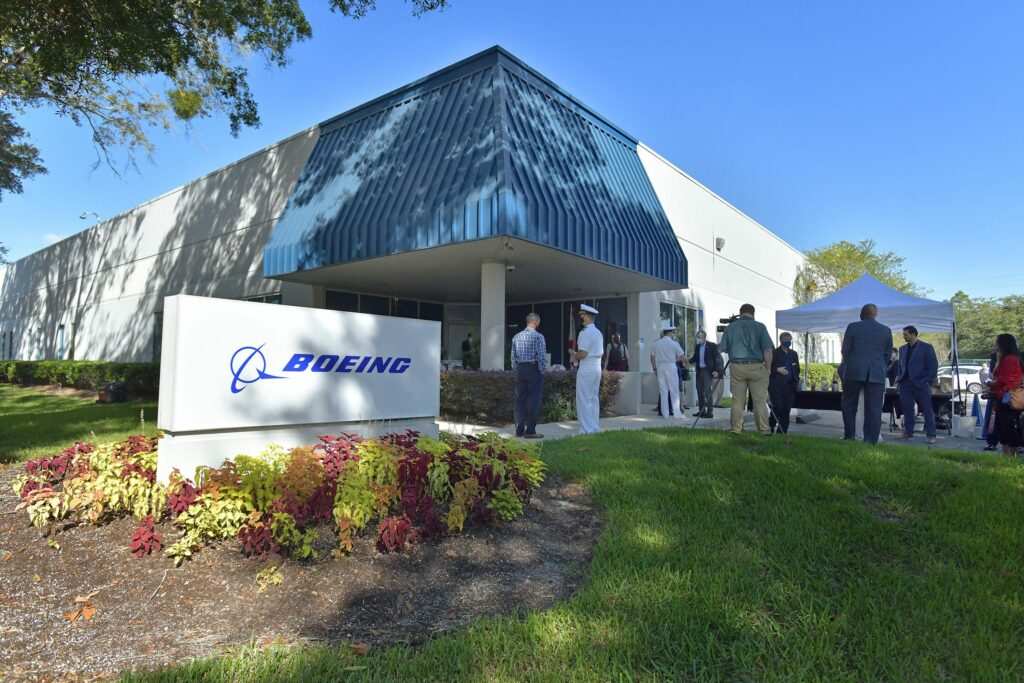On a tour of Boeing’s new training development center for Navy aircraft, Capt. Matthew Pottenburgh eagerly put on virtual reality goggles and picked up controllers, moving his head around as he marveled at his new virtual surroundings.
“Up in the nose wheel well!” he said. “It’s just like you’re in the airplane.”
After a few minutes, he took them off, smiling.
“Jon, you’ve got to do this,” he said to Capt. Jon Spore, a colleague at Naval Air Station Jacksonville. Spore demurred: “Nah, I’m good.”
They were on hand Tuesday as the company showed off its new Boeing Jacksonville Training Systems Center of Excellence, where it develops maintenance training systems for military aircraft, including the Navy’s P-8 Poseidon fleet at NAS Jacksonville.

The systems, which mimic that aircraft in minute detail, are designed to allow those who will work on planes to learn virtually. They will let them make mistakes without risks. And they will let them come face to virtual face with problems they might not otherwise ever see with hands-on training on real planes.
It’s a perfect fit for new, young maintenance crews, said Pottenburgh, commodore of Wing Eleven at the naval air station.
“This is how they learn,” he said. “They’ve grown up with cellphones, they’ve grown up with video games, their brains are wired this way. Now our training has caught up.”
The new Boeing center is on Lake Gray Boulevard off Blanding Boulevard, just north of Interstate 295 and not too far away from NAS Jax.
Greg Krekeler, Boeing’s senior director of government training systems and services engineering, said the site will soon also develop software for flight crews, including a full-motion flight trainer and a weapons tactics trainer.
The training systems will then be placed at the Navy base, where training can happen on big touch screens and with virtual and augmented reality systems.
Instructors using the equipment can create faults in the virtual planes, so students can troubleshoot problems that they might not otherwise see on a real plane, Krekeler said.

Then they can do it again, as many times as needed.
Pottenburgh said the virtual training will be a “game-changer, “a long way from hands-on training on real aircraft.
“Frankly, the more complicated procedures, that we don’t do very often, now they get to do them whenever they want. If a sailor does an incorrect procedure on the flight line, that could damage an airplane,” he said. “Here, they could do it all day long and learn what that looks like and what would happen to an airplane, and it costs us zero dollars.”
Boeing also has facilities at Cecil Airport where it maintains and modifies Navy and Marine Corps aircraft, among other functions. The company says it will soon break ground on a new hangar and office space there to consolidate and expand its services.
The new hangar has nearly 270,000 square feet of space, while the offices will be more than 100,000 square feet. That’s expected to open in January 2024, adding an anticipated 400 jobs to the 350 already at Cecil.
___
© 2021 www.jacksonville.com
Distributed by Tribune Content Agency, LLC.



